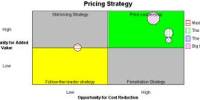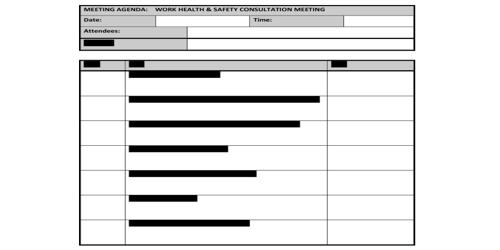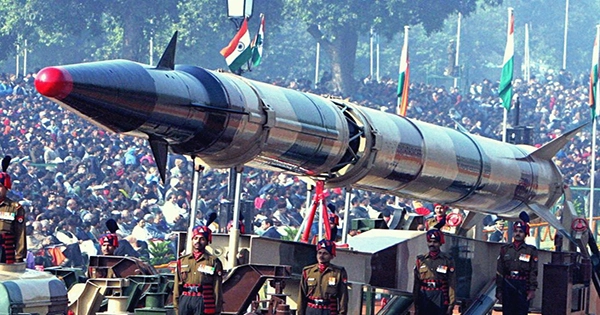Introduction
McDonald has been a well-known and valuable brand for over half a century. The company’s mission and vision is striving to be the world’s best quick service restaurant and formalizing their beliefs into “People Vision and People Promise.” “Quality, Service, Cleanliness and Value (Q.S.C. and V) also became the company’s motto. The company’s first McDonald store was built in 1940 by the original McDonald brothers, Dick and Mac. Later in 1954, Ray Kroc became the first official franchisee appointed by Dick and Mac McDonald in San Bernardino, California. Soon after, Mr. Kroc opened his first restaurant in Des Plaines, Illinois, and the McDonald’s corporation was created.
McDonalds

The new franchise began to grow rapidly as a result of its success. It wasn’t long before the 100th McDonald’s restaurant opened in Chicago in 1961. Less than ten years after the opening of Ray Kroc’s restaurant the company began to expand all over the United States. Ray Kroc bought all rights to the McDonald’s concept from the McDonald’s brothers for “2.7 million in 1961.”
McDonald’s continued to have enormous growth during the 1960’s. In 1963 alone, McDonald’s sold their one billionth hamburgers, opened their 500th restaurant, “Ronald McDonald” made his big debut, and McDonald’s net income exceeded $1 million. In 1966 McDonald’s was first listed on the New York Stock Exchange, and in 1967 McDonald’s went global. The company kept expanding with the introduction of the “Big Mac” and the opening of its 1,000th restaurant, which was where it all started- in Des Plaines, Illinois.
McDonald’s began to mature as a successful global business toward the beginning of the 70’s. By 1970, there was at least one McDonald’s restaurant in every U.S. state, and several in different countries around the world. Countries including France, Japan, Germany, and even Guam all had McDonald’s. And in 1972 the company’s assets reached an all time high of “500 million” while sales reached the billions. Statistics showed that a new McDonald’s was being opened each day around the world. With all this success, the company kept expanding globally. In 1972 the 200th restaurant opened, again in Des Plaines, Illinois. The company also continued to develop their product with the introduction of the Quarter Pounder. And in 1975 McDonald’s first drive-thru opened in Sierra Vista, Arizona.
Along with the company’s many successes, they also faced some significant challenges. Ray Kroc made a $250,000 donation presidential campaign in 1972, a donation which was subject to investigation during the Watergate scandal. According to the “Behind the Arches Book,” which was written with the backing and assistance of the McDonald’s corporation, the donation was made during the time that McDonald’s executives were lobbying to prevent an increase in minimum wage. In 1984 there was a terrible incident in San Diego, California where a man named James Huberty opened fire in a McDonald’s restaurant and 22 people were killed. As a result, the company had a lot of public relations to deal with along with its damaged reputation. In 1987 the Attorney Generals of Texas, California and New York threatened to sue McDonalds under the consumer protection laws because of an add campaign claiming that McDonald’s food was nutritious, meaning healthy and well-balanced. There have also been matters of food poisoning, and other related law suits.
Even today the company continues to expand. More countries around the world are opening more McDonald’s. There are many restaurants in the U.K., Hong Kong, Switzerland, and Spain and so on. The company’s sales and revenues are immeasurable, well into the billions. McDonald’s employs millions of people around the world. In America, many of the company’s employees are young and Latino. In other countries, employees seem to depend on the population of the country.
The McDonald’s company has a wide range of loyal customers. Many people feel as if they grew up with McDonald’s. People trust the company, and the McDonald’s concept just seems to make people feel good. That’s why their customers are rich, poor, old, young, black, white, Asian, and European. Though many of McDonalds’ competitors are also successful, they are no match for the giant franchise. Other restaurants such as Burger King, Jack in the Box, and Taco Bell simply don’t have the same image as McDonald’s. The company focuses on marketing strategies that effectively attract a wide variety of people. They especially appeal to children in hopes that they will become lifelong customers.
CURRENT STATUS OF COMPANY:
“”Billions served,” indeed. McDonald’s is the world’s #1 fast-food company by sales, with more than 30,000 of its flagship restaurants serving burgers and fries in more than 100 countries” . Today, “McDonald’s operates over 31,000 restaurants worldwide, employing more than 1.5 million people.” In terms of countries, it operates in more than 119 countries on six continents. 70% of the locations are run by franchises while the corporation owns the other 30%. The Boston Market and Chipotle Mexican Grill fast-casual chains are also owned by McDonald’s. There are some quick-service kiosk units located in retail areas and airports; the other locations are free-standing units. On a day to day basis, more than 47 million customers world wide are served by McDonalds. Over the years, McDonald has brought different promotions into the market to make the consumer purchase a fun experience. The most recent promotion was the Monopoly Best Chance Game 2004 which lasted from October 12 – November 15. It is also very important for the company to have a standard reputation. Therefore, the corporation makes sure that a Big Mac purchased in Pittsburgh tastes the same as one bought in Beijing by using standardized procedures.
The key numbers and key people for the company are as follows:
Key Numbers
| Company Type | Public (NYSE: MCD) | |
| Fiscal Year-End | December | |
| 2003 Sales (mil.) | $17,140.5 | |
| 1-Year Sales Growth | 11.3% | |
| 2003 Net Income (mil.) | $1,471.4 | |
| 1-Year Net Income Growth | 64.7% | |
| 2003 Employees | 418,000 |
More Financials
Key People
| Chairman | Andrew J. McKenna Sr. | |
| President, CEO, and Director | Charles H. (Charlie) Bell | |
| SEVP and CFO | Matthew H. (Matt) Paull | |
The company location and other related information is as follows:
McDonald’s Corporation (NYSE: MCD)
McDonald’s Plaza
Oak Brook, IL 60523 (Map)
Phone: 630-623-3000
Fax: 630-623-5004
Since McDonalds is such a huge corporation, serving so many customers world wide, it greatly relies on its suppliers. “McDonald’s suppliers in the U.S. operate over 40 distribution centers, strategically located to be accessible to more than 12,000 restaurants in the country. They provide a diverse range of products and services for our restaurants. It is crucial that the suppliers reflect the diversity of our customers around the world” 8 By maintaining current relationships with suppliers and also establishing new contacts, McDonalds continues to leverage the diversity within the supplier community. According to the corporation, the only way to serve a wide, diverse group of customers is through a wide, diverse group of suppliers.”
McDonald’s is in the fast-food business, and nowadays, there is huge competition for that. A competitor for McDonald’s can be anywhere from an upscale restaurant to a measly hot dog stand at a football game. The following is a list of companies that are in the same business as McDonald’s and qualify as major competitors:
- Burger King
- Subway
- Yum
- Wendy’s
- In & Out
- Taco Bell
- Sonic
- Jack in the Box
- Carl’s Jr
- Togo’s
- Quiznos
- KFC
- Popeye’s
- Pizza Hut
- Round Table Pizza
- Domino’s
- Wenerschnitzel
Of those, Burger King, Subway, and Yum are listed as the top three competitors.
The company uses IT and IS in a number of ways. In fact, without the technology, McDonald’s would not be able to operate as it does today. From taking orders to completing the orders everything involves a computer. A network system is used to take the order which is then sent in the back also through the system in order for the food to be cooked. The following are a few systems used by McDonald’s: POS (Point of sale) – this system allows orders to be placed, check the amount of inventory on hand, see the number of transactions that have occurred in the last few days or even years, see the labor percentage, total cost of waste, check the drive thru time(TTL). KVS (Kitchen valiance system) – this system allows the orders taken up front and in the drive thru to be displayed and transferred to the monitors in the grill area. The Porter Five Forces
The fast food industry is a revolutionary industry, which has taken the world by storm. With fast food restaurants showing up, what seems like on every corner, it’s interesting to analyze the competitive strategies companies in this industry use in order to survive. McDonald’s, with more than 30,000 restaurants worldwide is certainly no exception. A good way to analyze the strategies is by using the Porter five forces competitive model. The Porter model looks at what strategies a company uses to “effectively counter 1) the rivalry of companies in the industry, 2) the threat of new entrants, 3) the threat substitutes, 4) the bargaining power of customers, and 4) the bargaining power of suppliers.
The first of the five forces looks at rivalry within the industry. For McDonald’s, this includes all other fast food businesses. “ McDonald’s recognizes that it is up against not only other larger burger and chicken chains but also independent owned fish and chips shops and eat-in or take-out establishments.” Some of McDonald’s competitors include: Burger King, Wendy’s, In and Out, Taco Bell, and Jack in the Box. As mentioned above, the fast food industry is a very dynamic and competitive industry, so it is important for the McDonald’s corporation to develop strategies which will keep them ahead. Judging by the success of McDonald’s, it is clear that the corporation has developed some very effective strategies to stand out in the crowd.
One strategy McDonald’s focuses on is a differentiation strategy, partly combining it with the innovation strategy. By creating unique brand products, (chicken McNuggets, Big Mac, McFlurry) McDonald’s is setting self apart from its competitors. The innovation strategy is used by creating new and unique products (chicken tenders, Newman’s own salads, as well as specific products catered to specific region in the world), special celebrity endorsements (athletes, actors/actresses), partnerships/sponsorships (Music, Olympics, special movie toys), charities (Ronald McDonald House), games/promotions (monopoly game, special movie toys), which allow McDonald’s to develop their unique corporate image that sets them apart from their rivals. Another important role in staying competitive is McDonald’s online presence. The website (www.McDonald’s.com) is great opportunity to connect with the customers and stay competitive. Through the website, the company shows company facts, product information (nutrition facts), and links to the charity website, as well as games promotions (monopoly).
The second force that acts on the industry is the threat of new entrants. Fortunately for McDonald’s and it’s over 30,000 restaurants world wide, the corporation has set itself in a position of dominance. Using a growth strategy, McDonald’s is continuously expanding its reach which makes it increasingly difficult for new fast food restaurants to enter the industry. Through franchising, McDonald’s is able to reach nearly every corner of the globe. In addition, by using an alliance strategy, they are able to set up operations in Wal-Mart’s and sports stadiums and other firms which help support the industry.
The third force involves the threat of substitutes. For McDonald’s, any other food industry is a substitute. From classy restaurants, to hotdog stands, to grocery stores, McDonald’s faces a very large amount of substitutes. By continually offering different products, however, McDonald’s can be sure to remain on people’s list for a place to eat. Don’t forget the fact that one can get a lot of value for his/her money with McDonald’s dollar menu. Furthermore, by offering healthier alternatives, the company will be able to enter into new segments and increase their customer base.
The fourth force acting on McDonald’s is the bargaining power of buyers. This is a very powerful force, since McDonald’s relies on a strong customer base. In order to keep and gain new customers, the company must pay attention to the demands of consumers. With an onslaught of health books and diets, Americans are increasingly becoming aware of their health. As a result, consumers are demanding healthier products from the fast food industry. McDonald’s leads the industry by offering salads with organic Newman’s own dressing, as well as changing the oil they cook their fries in to a healthier substitute. In addition, they showcase all the ingredients in their foods in their restaurants and on their website. Also because of movies like “Super Size Me,” and books like, “Fast Food Nation” by Eric Schlosser, McDonald’s is aware of consumer trends and worries and is taking steps in that direction. An example is the removal of the super size option. Since the movie “Super Size Me,” people have taken notice to how bad super sizing is for your health. McDonald’s is the first to take action.”
The fifth and final force affecting the company is the bargaining power of suppliers. This is an important aspect of this industry. The supply chain going all the way to the farmers needs to be kept strong and connected. Especially, relationships with key firms like Coca Cola, Minute Maid, Heinz, Newman’s Own and others, needs to remain strong. “It is crucial that the suppliers reflect the diversity of our customers around the world. McDonald’s seeks to leverage the diversity within our supplier community through growing our existing supplier base, as well as developing new supplier relationships.”
McDonald’s is successfully taking measures to ensure their dominance in this food industry; they are continually growing, in size, in the products they offer and in charity work. It’s no surprise that McDonald’s is number one in the fast food industry.
Strategy:
The strategy the company is using to maintain or improve its competitive position is lowest total cost, expanded menu, having more than 30,000 stores, Hamburger University, celebrity endorsements, partnerships/sponsorships in music and Olympics, and Ronald McDonald Charity/Corporate responsibility. With the Ronald McDonald Charity program the company has awarded more than “$400 million” dollars in grants worldwide towards the mission to make an immediate and positive impact on as many children as possible. The company also participates in for World Children’s Day, an annual global fundraiser which benefits the Ronald McDonald House Charities and local Children’s causes. In addition to the Ronald McDonald House Charities, corporate responsibility is also an important factor of McDonald’s heritage. The company has a record of industry leadership in community involvement, environmental protection, diversity, opportunity, and working with their suppliers to improve their practices. By having these programs the company is doing a very good job in building a relationship with the community.
Challenges and Opportunities:
Like many other companies, McDonald also struggles with many challenges and opportunities. There are opportunities as in continuous deliverance of quality, cleanliness, service, and value to their consumers. The company has to face challenges of other competitors which include Wendy’s, Burger King, In and Out, Jack in the box, etc. In addition to competitor challenges, the company also faces unionized workforce. They are ideologically hostile to unions. They regard unions as third parties and they refuse the legitimacy of a union as an expression of the interests of the employees that they’re dealing with. Dan Gallian who is the general secretary of IUF said, “They have accepted unions, and collective bargaining, if the alternative was to close altogether or suffer major public relations damage. But even when they have allowed a union, they’ve then tried to chip away at union recognitions.”The company only follows the Donald’s manual, which is their form of regulatory compliance. With this being the issue, IT/IS can definitely help the company out in many ways. The company needs to make sure all challenges and opportunities within the organization are easier for everyone to understand and ensure that all employees follow the company’s compliances. IT/IS allows employees within the corporation to communicate effectively and ensuring everyone is on top of everything. Do to this; it is very necessary that an intranet website is made which goes into detail about all of these concepts, that way everyone within the company is on the same page. Information system can also allow the company in supporting business processes, decision making, and competitive advantage. By utilizing Information system it helps store managers to make better decisions and attempt to gain a competitive advantage. For instance, what lines of merchandise need to be added or discounted, and it helps them looks for ways to gain an advantage over their competitors in competition for customers.
Internal Strength/Weaknesses:
They are many strengths and weaknesses in the McDonald’s corporation. The first strength is that the company can offer a meal with low prices. They also have a healthy menu which consist of Low carbohydrates options which cost only $1.00. One of the weaknesses the company faces is the low market share in chicken products since Wendy’s is the leader with the biggest market share in chicken products. The company can further improve their business with other IT/IS. First of all, there are many ways to use IT/IS because it helps in business activities, resolving problems, and business opportunities. By utilizing IT, McDonald can create an interactive marketing process which is “a term used to describe a customer focused marketing process that is based on using the intranet, internet, and extranet to establish two-way transactions between a business and its customers.” By utilizing IT to create an interactive marketing, McDonald can use the network to attract and keep customers. This also allows them to get feedback from customers since interactive marketing encourages customers to be involved with the company’s services and delivery issues.
Through researching McDonalds Corporation these last few weeks we have learned a lot about the company’s responsibility and how they have contributed to the community in children’s life. As consumers we all value how important time is, with McDonalds offering more than 30,000 restaurants for services, it is going to surely make getting food faster and cheaper.
Division of Labor
Isabel Soboszek:
She was assigned the task of finding background information on the company, history, the founder, executives, and significant challenges the company may face.
Meghan Dilawari:
She did the current status of company which includes all information on sales/revenues, share of market, company locations, and number of employees, suppliers, customers, and competitors. She also assists in putting the reference page together.
Matt Salisbury:
He was responsible for the Porter’s Competitive Forces Model and doing researching on the company’s key external challenges and opportunities.
Farhan Latif:
Strategy, cost leadership, differentiation information. Researching information as well.
Tammy Huynh:
I worked on the challenges/opportunities for the company, as well as the strength and weaknesses. I also help put the project together and ensuring that things are correct with the help of Meghan.
















